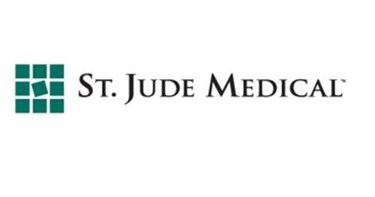St. Jude Study: Axium Neurostimulator Outperforms Traditional Spinal Cord Stimulators
By Jof Enriquez,
Follow me on Twitter @jofenriq

St. Jude Medical is touting positive results of a clinical trial that demonstrated the effectiveness of its Axium Neurostimulator System over traditional spinal cord stimulators (SCS) to relieve the chronic lower limb pain associated with complex regional pain syndrome (CRPS) or peripheral causalgia (nerve damage). The Axium system stimulates the dorsal root ganglion (DRG) for more selective targeting of pain areas that are hard to reach, like the groin, lower leg, and foot.
According to a press release, the ACCURATE study showed that DRG stimulation using the Axium system was better than traditional SCS (81.2 vs 55.7 percent) in providing pain relief. Participants also reported no differences in the intensity of paresthesias due to postural changes — a common side effect of traditional SCS therapy — while using the Axium system during the three-month trial. They also reported feeling less stimulated outside their area of pain, demonstrating the precision of DRG stimulation.
“Data from the ACCURATE study are exciting because they demonstrate that DRG stimulation can offer meaningful improvement over traditional spinal cord stimulation for patients suffering from chronic pain conditions that have historically been challenging to treat,” said Mark Carlson, M.D., chief medical officer at St. Jude Medical, in the release. “We look forward to continuing to develop DRG stimulation therapy to expand availability for patients currently underserved by traditional chronic pain therapy options.”
The results of the U.S. study reflect last year's presentation of 20 international, peer-reviewed scientific abstracts from Australia and Europe highlighting positive clinical outcomes of the Axium system for the treatment of chronic, intractable pain.
St. Jude is using the multi-center ACCURATE clinical trial to support its PMA application for FDA approval of DRG stimulation for those diagnosed with CRPS or peripheral causalgia, two of the many chronic pain conditions currently underserved by traditional SCS therapy.
DRG stimulation is a chronic pain management technique targeting the dorsal root ganglion – a cluster of sensory neurons that serve as a conduit of pain signals from the peripheral nervous system to the central nervous system. By stimulating this structure, pain signals can be blocked before they are transmitted to the spinal cord and processed in the brain. Unlike traditional SCS therapy, which targets nerves along the spinal cord’s dorsal column, DRG stimulation offers selective targeting of pain areas, with fewer side effects, such as paresthesias.
The company uses the Axium system developed by Spinal Modulation, Inc., which it recently acquired, to conduct the DRG stimulation trial. The Axium device consists of two parts: a pulse generator implanted in the buttocks or abdomen, and up to four wires (leads) that have one end attached to the pulse generator, and the other end secured to the tissue near the target treatment area.
The Axium system has been granted a CE Mark in the European Union for the management of chronic intractable pain, and TGA approval in Australia for the management of chronic, intractable pain of the trunk and/or limbs. It is an investigational device in the U.S. pending FDA approval.
According to St. Jude, chronic pain affects approximately 1.5 billion people worldwide, more than heart disease, cancer and diabetes combined. The company claims it is the only medical device manufacturer in the world to offer radiofrequency ablation (RFA), SCS, and DRG stimulation therapy solutions for the treatment of chronic pain.
